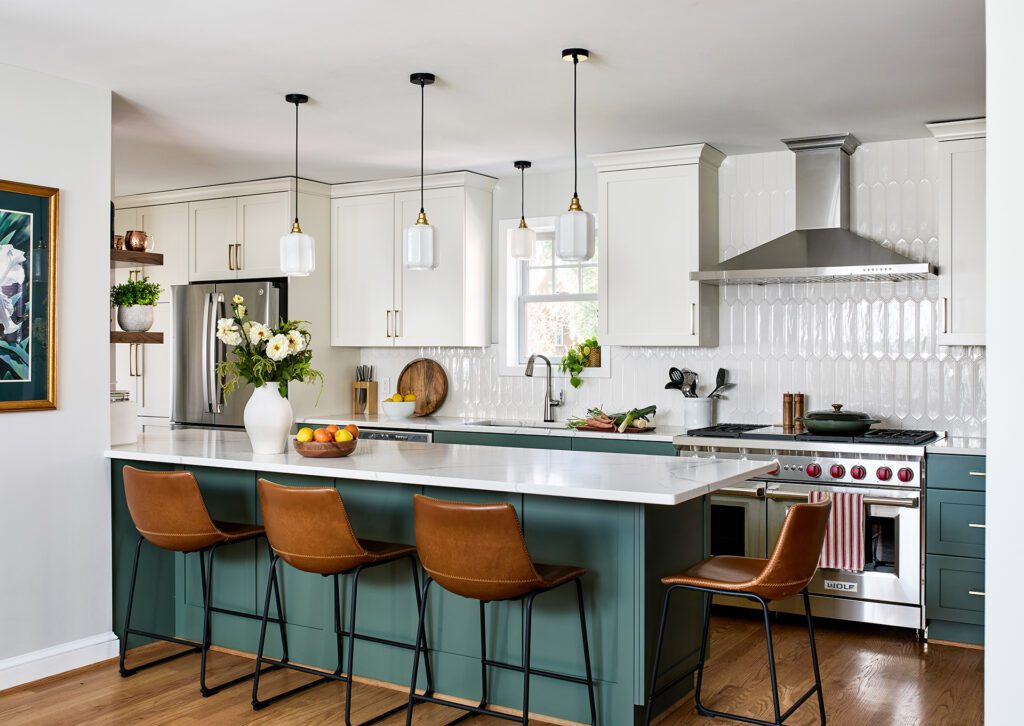There are many ways to contract remodeling work, each with its own benefits and risks. A time and materials contract is used by some for large projects, but it is most often used for smaller projects or when the exact project scope is uncertain. The remodeler bills the client for hours (labor, design, oversight, etc.) and materials used to complete the project. Remodelers using a cost plus contract bill the client for any costs incurred during the project, plus a predetermined fee to cover profit and overhead.
At Case, our preferred method of constructing an agreement to build a project is a fixed price contract. But… words can be interpreted to mean different things to different people. To us, a fixed price contract has a total cost of the project and an outline of “draws” for when payment is due. There are not many conditions that will cause this price to change, but there are a few. As a buyer of remodeling services, you should clearly understand what would change this price. Specifically, for a Case contract, those items would be:
– you decided to add or subtract work from the project / contract
– you make a change in the materials to be used
– we run into an unforeseen condition- a wire in a wall to be removed is not “unforeseen” but an underground spring that impacts foundation work qualifies
– allowances used as placeholders for items not selected or work that is not well defined
ALLOWANCES
We should spend some time discussing allowances. First, a definition. An allowance is a specified amount of money set aside for an item which there is not enough information to establish an accurate price. The key to allowances is accurate budgeting for the amount to be set aside, nobody likes surprises. We typically use them for 2 specific items- drywall patch and permits. These items vary project to project but we have a good idea of what to budget for both of them. The credits or charges associated with them when reconciled is typically very small. That may not be true for all allowances.
Fixed price contracts should be the solution for the uncertainty brought by both time and material and cost plus contracts, right? Maybe. This is being written in May 2025. Tariffs, price increases, and supply chain changes make predicting the exact cost of materials difficult to determine. Timelines also impact this issue. Projects are often estimated months before actual materials are bought. Permits and the logistics of gearing up to start a project can take weeks or months. How much will that faucet cost 3 in months? A fixed price contract protects a buyer in many ways, but there are two items in a fixed price contract that may be used by a remodeler to mitigate their risks.
The vast majority of remodelers are very small businesses. They do not have the resources to project what something will cost months from now or the financial reserves to cover big cost overruns on a project. As a result, in a world of uncertainty you may see an increased use of allowances in fixed price contracts. This is not necessary a bad thing, but you should realize that you are responsible for any amount of an item that exceeds the allowance. Let’s use a hall bathroom as an example. If an allowance of $3,000 was set aside to buy plumbing fixtures was included in the contract but when the items were bought, they cost $4,000, you are responsible for the $1,000 increase. A $1,000 increase may or may not be cause for concern but if you are exposed to many allowances, your fixed price contract may actually not be very fixed. It is good practice to have as few allowances as practical in a contract.
ESCALATION CLAUSE
The other item you should be aware of is an escalation clause. This allows the contract cost to escalate if certain conditions are met. The escalation may be limited to materials but in some cases, includes labor as well. If your contract includes this type of clause, take the time to thoroughly read and understand it. You want to know what is subject to an increase and what conditions need to be met to trigger the increase.
FIXED PRICE
Fixed price should mean fixed price with very few caveats. Our contracts do not include an escalation clause and use minimal allowances. We have worked for nearly 65 years to build a business capable of offering this to our clients. We use a carefully crafted process to develop the project. We have four local design studios to make material selections easy and convenient. We have a warehouse that allows us to buy and store materials soon after a contract is signed so we are not exposed to increases downstream. We have well developed network of suppliers and vendors that we are in contact with regularly. We want to know when price increases are coming so we can advise clients accordingly. Sometimes days matter.
There are many ways to structure a remodeling contract, each with its own advantages and risks. In a time of uncertainty, understanding the structure—and the risks—of your remodeling agreement is more important than ever.
